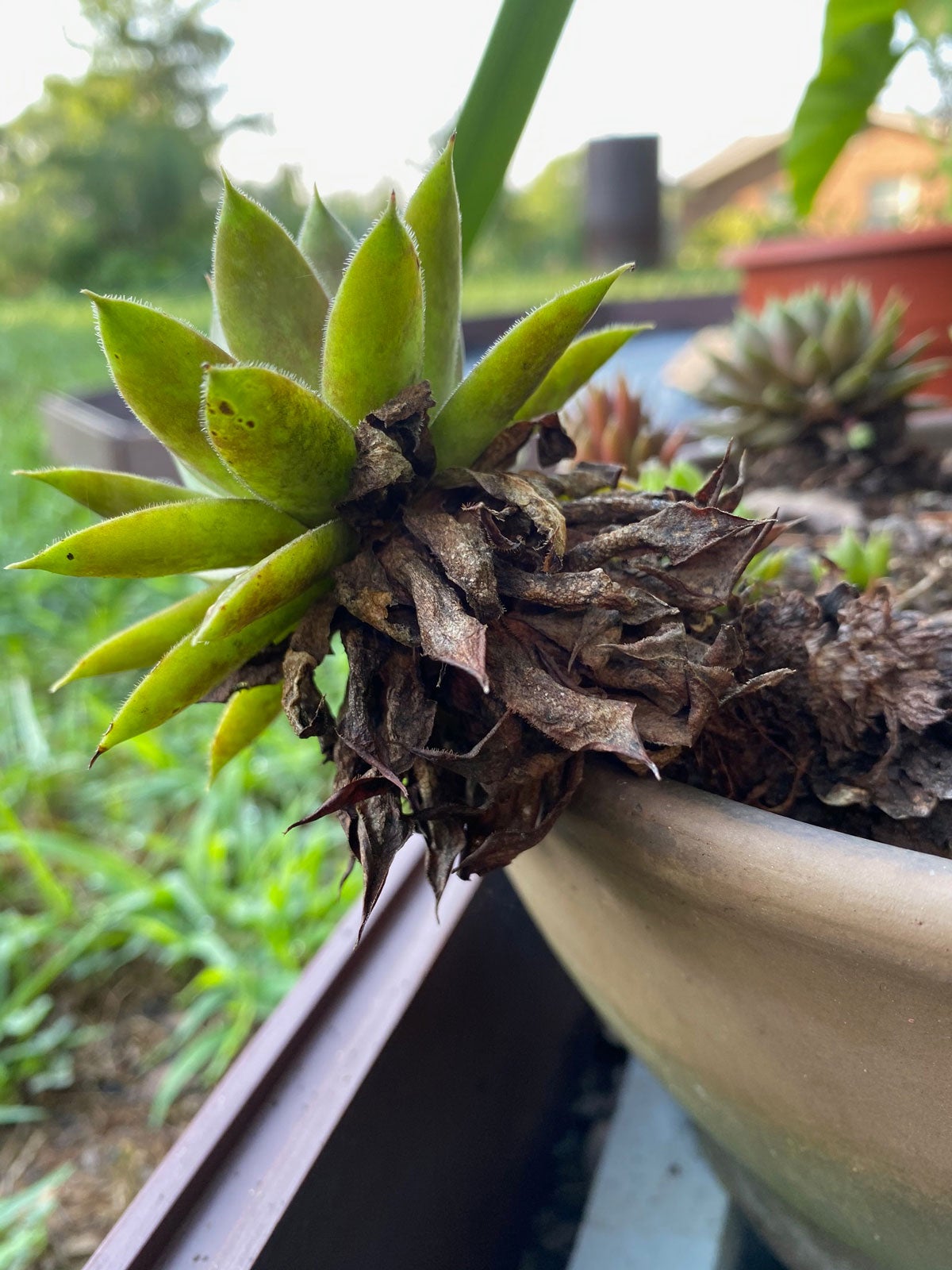Sempervivum Is Dying: Fixing Drying Leaves On Hens And Chicks


Succulent plants are divided into several categories, many of them are in the Crassula family, which includes the Sempervivum, commonly known as hens and chicks.
Hens and chicks are so named because the main plant (hen) produces offsets (chicks) on a thin runner, often in abundance. What happens when you notice drying leaves on hens and chicks? Are they dying? What, if anything, can be done to remedy the issue?
Why are Hens and Chicks Dying?
Also known as ‘forever alive,’ the Latin translation for Sempervivum, there's no end to the multiplication of this plant. The offsets of hens and chicks eventually grow to an adult size and repeat the process over again. As a monocarpic plant, adult hens die after flowering.
Blooms often do not occur until the plant is several years old. If this plant is unhappy in its condition, it may flower prematurely. The flowers rise on a stalk the plant has produced and remains in bloom for a week to several. The flower then dies and is soon followed by the death of the hen.
This describes the monocarpic process and explains why your Sempervivum is dying. However, by the time the hen and chick plants are dying, they will have created several new offsets.
Other Issues with Sempervivum
If you find these succulents are dying before blooming happens, there could be yet another valid reason.
These plants, like other succulents, most often die from too much water. Sempervivums perform best when planted outdoors, getting plenty of sunlight, and limited water. Cold temperatures rarely kill or damage this plant, as it is hardy in USDA zones 3 to 8. In fact, this succulent needs a winter chill for proper development.
Sign up for the Gardening Know How newsletter today and receive a free copy of our e-book "How to Grow Delicious Tomatoes".
Too much water can cause dying leaves throughout the plant, but they won’t be dried out. Leaves of an overwatered succulent will be swollen and mushy. If your plant has been overwatered, allow the soil to dry before watering again. If the outdoor area where hens and chicks is planted remains too wet, you may want to relocate the plant-- they're easy to propagate too, so you can simply remove the offsets and plant elsewhere. Container plantings may need to be repotted in dry soil to prevent root rot.
Not enough water or too little light can sometimes cause drying leaves on hens and chicks. However, this won’t cause the plant to die unless it continues for a long period of time. Some types of hens and chicks lose bottom leaves regularly, especially in winter. Others do not.
Overall, Sempervivum has few problems when located in the right conditions. Try to keep it outside year-round in a rock garden or any sunny area. It should always be planted in well-draining soil that does not need to be nutrient rich.
The mat-forming groundcover does not require separation if it has enough room to grow. One problem experienced in early spring is its availability to browsing wildlife. However, if your plant is eaten by rabbits or deer, leave it in the ground and it may possibly return from the root system when the animals have moved on to more attractive (to them) greenery.

Becca Badgett was a regular contributor to Gardening Know How for ten years. Co-author of the book How to Grow an EMERGENCY Garden, Becca specializes in succulent and cactus gardening.